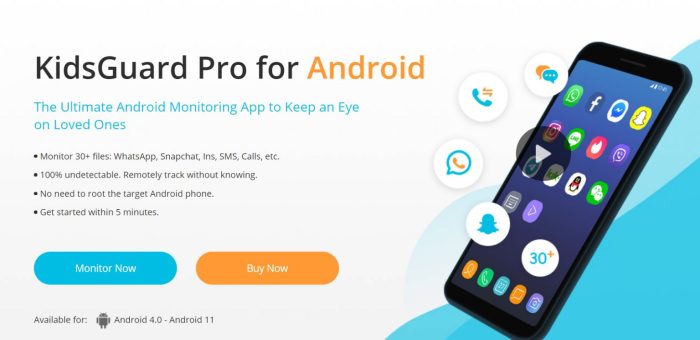Parental Control App for Android Your Digital Shield
Navigating the digital world with kids can feel like walking a tightrope. One wrong step, and they could stumble into something inappropriate. That’s where parental control apps for Android come in – your digital safety net. These apps aren’t just about restrictions; they’re about empowering parents to understand and manage their child’s online experience, creating a safer space for exploration and growth. From filtering harmful content to monitoring app usage, these tools offer a wealth of features to help you stay connected and informed.
This comprehensive guide dives deep into the world of parental control apps for Android, exploring everything from the fundamental features and functionality to the essential security and privacy considerations. We’ll analyze different apps, detailing their pros and cons, and ultimately equip you with the knowledge to choose the right solution for your family’s needs.
Parental Control Apps for Android: A Comprehensive Guide
In today’s digital age, safeguarding children online is paramount. Parental control apps for Android devices provide valuable tools to monitor and manage children’s digital activities. This guide delves into the essential aspects of these apps, from their features and functionality to security and privacy considerations, offering insights into their implementation and future trends.
Introduction to Parental Control Apps for Android
Parental control apps for Android devices are software applications designed to restrict and monitor children’s access to content and activities on their mobile phones. These apps offer various features to help parents manage their children’s online experience and screen time.
- Definition: Parental control apps are software tools that empower parents to regulate their children’s mobile device usage, including internet access, app downloads, and communication.
- Types of Features: These apps typically include content filtering, device location tracking, communication monitoring, app usage limits, and screen time management.
- Common Use Cases: Parents use these apps to prevent exposure to inappropriate content, control online interactions, limit screen time, and track their children’s location for safety.
- Importance in Today’s Digital Age: With children increasingly reliant on technology, parental control apps are crucial for ensuring a safe and responsible digital environment.
- Benefits and Drawbacks: Benefits include enhanced online safety and better time management. Drawbacks may include potential limitations on child autonomy and concerns about data privacy and security.
Features and Functionality
Different parental control apps offer varying levels of features. The effectiveness of these apps hinges on the comprehensiveness and security of their functionalities.
| App Name | Content Filtering | Device Location Tracking | Communication Monitoring | App Usage Limits | Screen Time Management |
|---|---|---|---|---|---|
| Example App 1 | Comprehensive filter for websites and apps | GPS location tracking with geofencing | Message and call log monitoring | Daily/weekly app usage limits | Customizable daily screen time limits |
| Example App 2 | Limited content filtering options | Basic location tracking | Limited communication monitoring | Basic app usage restrictions | Pre-set screen time schedules |
These features help safeguard children by preventing access to inappropriate content and monitoring their online interactions. Data encryption and secure communication channels are essential for protecting the privacy of user data.
Most apps are compatible with various Android versions. The level of control, from basic to advanced and premium tiers, is determined by the app’s subscription and/or paid features.
Implementation and Setup
Installing and configuring parental control apps is generally straightforward. The steps are usually similar across various apps.
- Download and install the app on the parent’s device and the child’s device.
- Create an account and set up the app on the parent’s device.
- Add the child’s device to the parent’s account.
- Configure the desired parental controls on the parent’s device.
User privacy and data security are paramount during setup. The app should clearly Artikel data handling policies.
Security and Privacy Considerations
Data security and privacy are critical when using parental control apps. Parents need to ensure the app employs robust encryption methods to safeguard their children’s data.
Potential vulnerabilities include unauthorized access to data, insecure communication channels, and lack of transparency regarding data handling practices. Parents should research and choose apps with strong security measures.
User Experience and Interface
A user-friendly interface is essential for both parents and children. Parents should be able to easily manage controls, while children should find the app intuitive and non-intrusive.
| Element | Description | Function | Example |
|---|---|---|---|
| Dashboard | Overview of controls | Displays current settings | Summary of active controls and usage |
| Settings | Control customization | Adjust app settings | App usage limits, location monitoring |
App Comparison and Evaluation
Evaluating different apps based on various criteria is crucial for selecting the most suitable option. Factors include ease of use, features, pricing, customer support, and security.
| App Name | Ease of Use | Features | Pricing | Customer Support | Security |
|---|---|---|---|---|---|
| Example App 1 | High | Comprehensive | Premium | Excellent | Excellent |
| Example App 2 | Medium | Basic | Free | Average | Good |
Future Trends and Developments

Future parental control apps may incorporate AI and machine learning to provide more accurate and personalized recommendations and insights.
The industry will likely see increased focus on data security, enhanced user experience, and integration with other family management tools.
